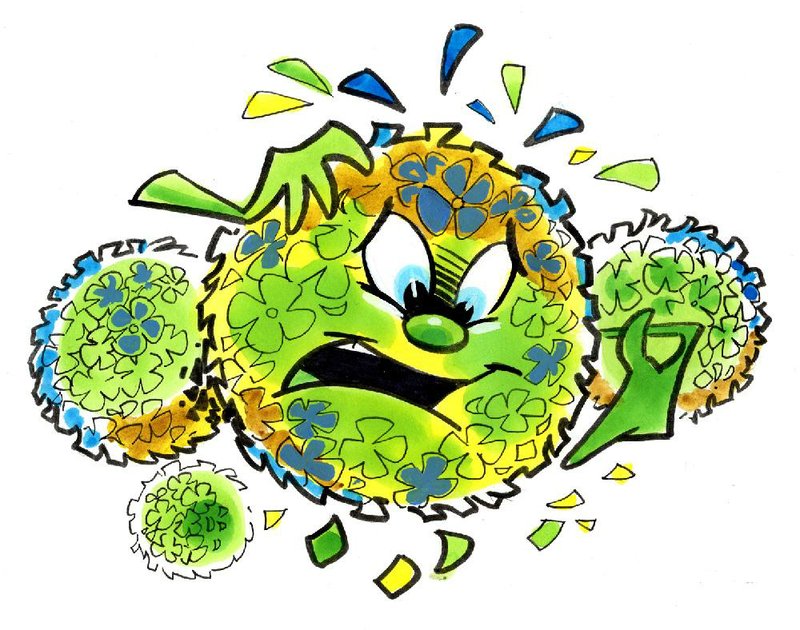Q I have about 10 "Niko Blue" hydrangeas. They had lots of beautiful blue blooms in June. Now they are putting on green blooms. They do this every year. Can I do anything at this point to turn the new blooms blue?
A I think we have all forgotten the growth habits of the big-leaf hydrangeas since we haven't seen too many blooms the past two years. I have had a lot of people asking what is wrong with their hydrangeas, do they have a disease, because the blooms are changing from beautiful blue, pink or purple to a washed-out green or beige. That is the natural aging of the flowers. Unless you are growing reblooming big-leaf hydrangeas, they are finished with their flowering for the year and their blooms are aging. It is just like any bloom on a plant, as the flower is spent, it changes color and fades away. Some people like the dried-flower look that eventually occurs on their hydrangeas, while others like a more manicured look. If you don't like discolored blooms, clip them off, placing your pruner just behind the bloom to avoid removing next year's buds.
Q For the last several years, a patch of orange day lilies in our yard has put up healthy looking sprouts in the spring but the leaves have lost color by bloom time and offer no flowers. Recently, I saw the same look in a patch on the edge of a field northeast of here. What gives?
A If day lilies aren't blooming, it usually means they are too crowded or in too much shade. They benefit from division every three or four years. Also check the foliage to make sure there are no brown spots on the leaves. Some fungal diseases can damage the foliage, which can also reduce blooms.
Q We have just finished building a house on a lake in Bella Vista and need some natural screening quickly. What do you think of clumping bamboo?
A Clumping bamboo is fine, but avoid running bamboo. Clumping bamboo will expand with time, but it usually doesn't send out rhizomes -- which are what makes the running form so invasive.
Q I have tried unsuccessfully in the past to harvest seeds from my annual marigold plants. Is there a specific time of year when they can best be harvested? How long should the spent blooms be allowed to hang on the plant to be set as seeds? How about storage over the winter?
A As long as you are growing varieties of marigolds that set seeds, they should be fairly easy to save. The spent flower should not be removed or deadheaded, but allowed to dry on the plant. As the seed head matures, it will turn brown and dry. You can put a small paper bag around the bloom to hold the seeds in case you miss them, but it usually isn't necessary. Once the seed pods dry, cut them off and let them air dry for a few days. Then harvest the seeds from each pod and place them in a paper envelope until planting next spring.
Q For several years, I have had a great crop of black-eyed Susans. Of course, they reseed and I have more every year. This year they aren't as tall as previous years and have not near as many blooms. What happened? The only thing I can think of is maybe they have gotten too thick, and I need to thin them out. What are your thoughts?
A If they are too crowded, it can limit blooming -- in size and quantity of blooms. Black-eyed Susans also like hot, dry weather, so the extra rain we got early on may have slowed them down. As hot as it has been recently, they may be rebounding.
Janet B. Carson is a horticulture specialist for the University of Arkansas Cooperative Extension Service. Write to her at 2301 S. University Ave., Little Rock, Ark. 72204 or email her at
jcarson@arkansasonline.com
HomeStyle on 07/30/2016
